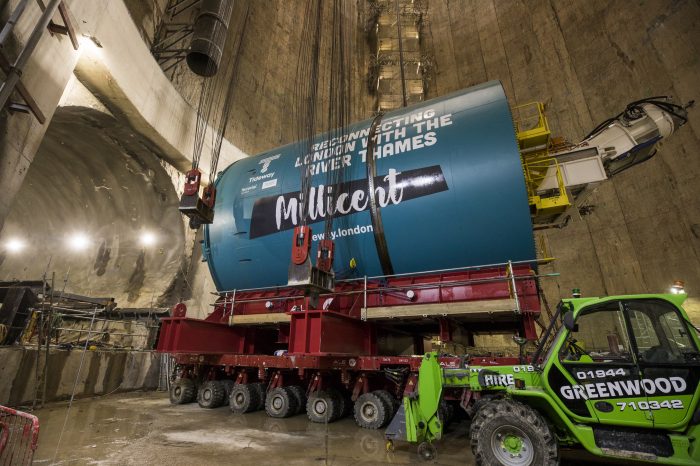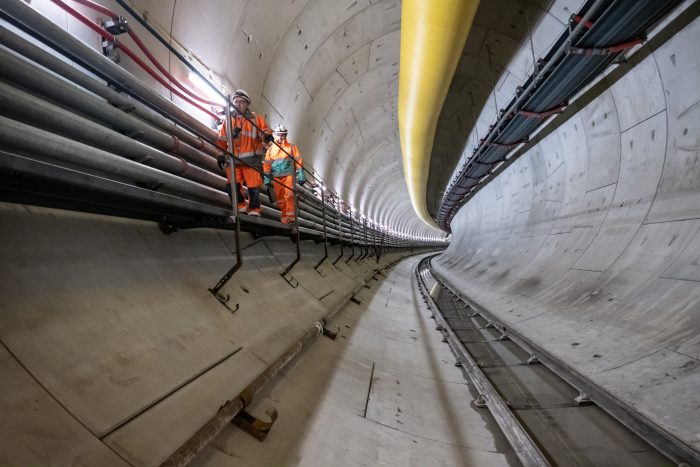London’s existing Victorian sewer network was designed by Sir Joseph Bazalgette over 150 years ago for up to four million people – it’s now double that. The new sewer will accommodate the needs of London’s growing population for the next century.
Starting back in November 2018, the Tideway Central westbound Tunnel Boring Machine (TBM) has now completed more than 1,000 rings, leaving less than 2,000 rings to be installed in the westbound drive.
Millicent is the TBM responsible for the central delivery team’s westbound drive. The TBMs are 120m long and weigh approximately 1,300 tonnes. The TBM was lowered to the bottom of a 53-metre-deep shaft on site at Kirtling Street. Once lowered the machine was carefully placed into a pre-excavated starter tunnel known as an adit. Thereafter, Millicent has averaged a tunnelling speed of 8m a day.

The TBM machine will remain underground for almost two years. Once finished, the entire 12.5km Central tunnel will be lined with 7,000 precast concrete tunnel rings, with each ring weighing just under 40 tonnes and comprising 7 segments and keystones.
The westbound tunnel is now over 2,000m long passing beneath Albert Bridge at the western end of Battersea Park.

The Thames Tideway Tunnel is the largest infrastructure project ever undertaken by the UK water industry. It is essential to tackling overflows from London’s Victorian sewers into the Thames, for at least the next 100 years. The project will create over 4,000 sustainable jobs and another 5,000 indirectly. It will also offer hundreds of local apprenticeships and work placements, leaving a lasting legacy in the heart of London.
Awarded in August 2015, the central section of the project is being delivered by a Ferrovial Agroman Laing O’Rourke joint venture.







